How Much Tea Is in a Tea Bag
Shop our Pu Erh Tea collections!
When you examine a tea bag, you're looking at a small, porous package containing dried, crushed tea leaves. The quantity of tea within a bag typically varies between 1 to 3.5 grams, depending on the brand, the size of the tea bag, and the intended strength of the brew.
Contents by Weight:
Bestsellers
- Standard tea bag: 2 grams on average
- Large tea bag: Up to 3.5 grams
Tea Types:
- Black tea: Commonly 2 grams
- Green tea: Slightly less, about 1.8 grams
- Herbal tea: Often contains 1.5 to 2 grams, varying with ingredient density
Bag Materials:
- Paper fibers: Traditional and most common
- Silken bags: Made from synthetic materials
- Cotton or muslin: Less common, often used for premium teas
The shape of your tea bag also influences its contents. Pyramidal bags often accommodate more tea leaves—sometimes up to 50% more—compared to traditional flat bags. This design allows for larger leaves, which can improve the quality of your tea.
Keep in mind that specialty and artisanal tea producers may offer more nuanced variations in tea bag contents, including whole leaf options that alter the weight and brewing characteristics significantly. Always check the packaging for specific details regarding the tea's weight and composition to ensure you're brewing it according to the manufacturer's recommendations.
Check out our Sheng pu erh tea collection and Ripe pu erh tea collection.
Average Contents of a Tea Bag
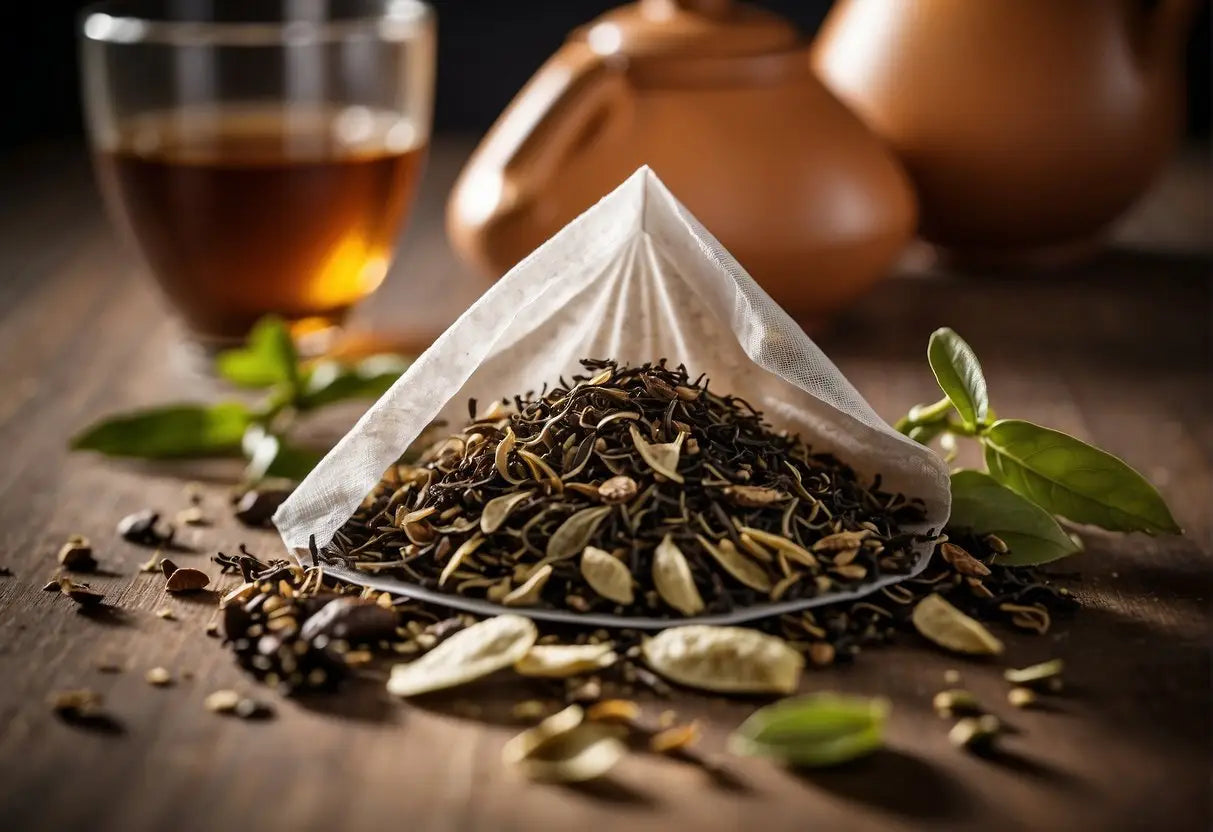
The quantity and type of tea leaves in your tea bag are primary determinants of strength and flavor.
Quantity of Tea Leaves
Typically, one tea bag contains about 1 to 3 grams of tea. The exact weight may vary depending on the brand and the intended strength of the tea. For a standard cup of tea (about 6 to 8 ounces), this amount of tea is considered sufficient.
Type of Tea Leaves
- Black Tea: Often from Assam, Ceylon, or Darjeeling, noted for its robust flavor.
- Green Tea: Usually sourced from China or Japan, it offers a more delicate taste.
- Herbal Tea: A blend of various herbs, fruits, and flowers rather than actual tea leaves.
- Oolong Tea: A traditional Chinese tea with a complexity between black and green tea.
- White Tea: The least processed, with a light, sweet flavor, often from the Fujian province.
Each type influences the characteristics of your brew, such as taste, caffeine content, and health benefits.
Standard Measurements
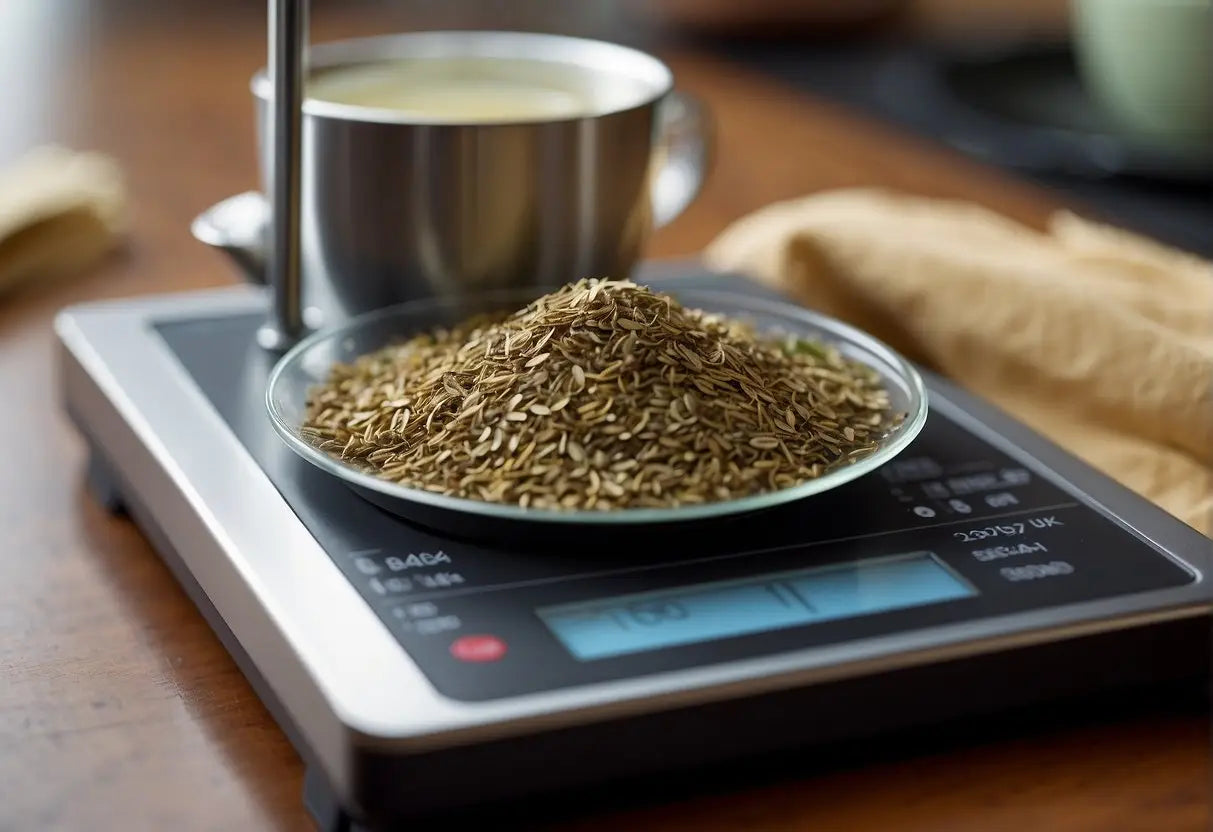
In understanding the quantity of tea provided in each bag, it's essential to consider both the weight and resulting volume after brewing.
Tea Bag Weight
The weight of a tea bag typically ranges from 1.5 to 3 grams, providing a single serving of tea. High-quality brands tend to stick closer to the 3-gram mark to ensure a robust flavor. Tea bag weights are consistent to ensure uniform strength and quality in each cup.
Lao Ban Zhang
Volume of Tea in a Cup
When steeped, a standard tea bag produces approximately 6 to 8 ounces of tea, which is roughly the size of a standard cup. The actual volume may vary depending on personal preference for tea concentration and the amount of water used. Here's a brief guide:
- Light Brew: 8 ounces
- Strong Brew: 6 ounces
Remember, the volume listed here assumes the use of one tea bag per cup.
Brewing Strength
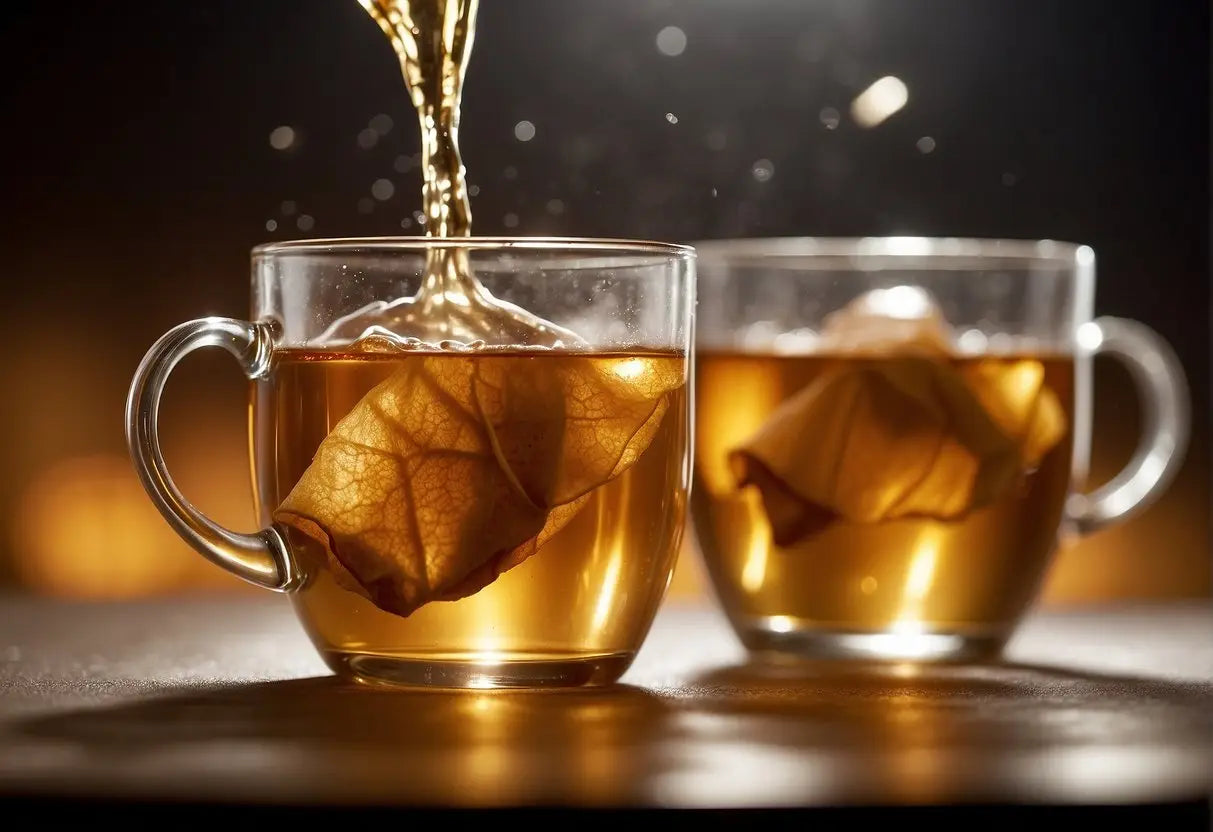
When you steep a tea bag, the strength of your brew depends both on the density of the tea leaves within the bag and the overall size of the tea bag itself. Different teas require different densities and bag sizes to achieve the ideal strength.
Tea Leaf Density
Assam: 2.1 g/cm³
Sencha: 1.7 g/cm³
Chamomile: 0.9 g/cm³
The density of tea leaves in your tea bag has a direct impact on the potency of the flavor. Typically, black teas like Assam have a higher leaf density, leading to a more robust brew, while lighter teas such as Chamomile have a lower density, resulting in a milder flavor.
Tea Bag Sizes
Standard Bag: 2.25 x 2.5 inches | 1-2 grams of tea
Large Bag: 3 x 3 inches | 2-4 grams of tea
The size of the tea bag determines how much room the leaves have to expand and diffuse their flavor. A standard-sized bag is suitable for a single cup, whereas larger bags are better suited for a pot, providing a stronger, more concentrated brew.
Packaging Variations
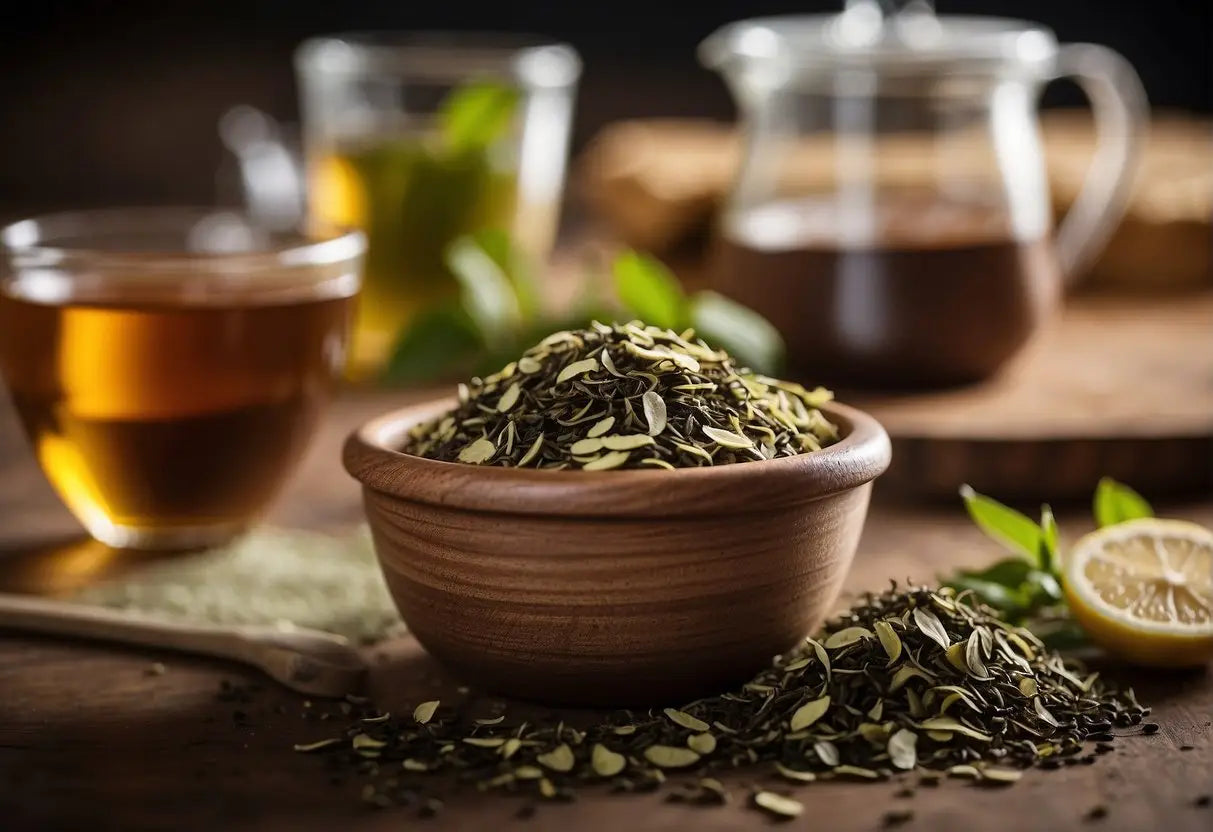
Tea bags come in various packaging options to meet diverse preferences and usage scenarios. These differences can influence the freshness, quality, and quantity of tea you get.
Individual Wrapping
Tea bags are often individually wrapped to preserve the tea's aroma and flavor. Manufacturers typically use foil, paper, or a combination of both materials to seal each tea bag. This method ensures that each cup you brew with an individually wrapped tea bag is fresh.
- Foil wrapping: Offers a higher barrier against moisture and odors.
- Paper wrapping: Is more eco-friendly and often used for organic tea brands.
Box Quantities
You can purchase tea bags in various box quantities, which are suited for either personal use or bulk purchase. Standard sizes range from as few as 10 to as many as 100 tea bags in a single box.
- Small boxes: Typically contain 10-20 tea bags, ideal for occasional tea drinkers.
- Large boxes: May have 50-100 tea bags, catering to frequent consumers or offices.
Tea Quality Indicators
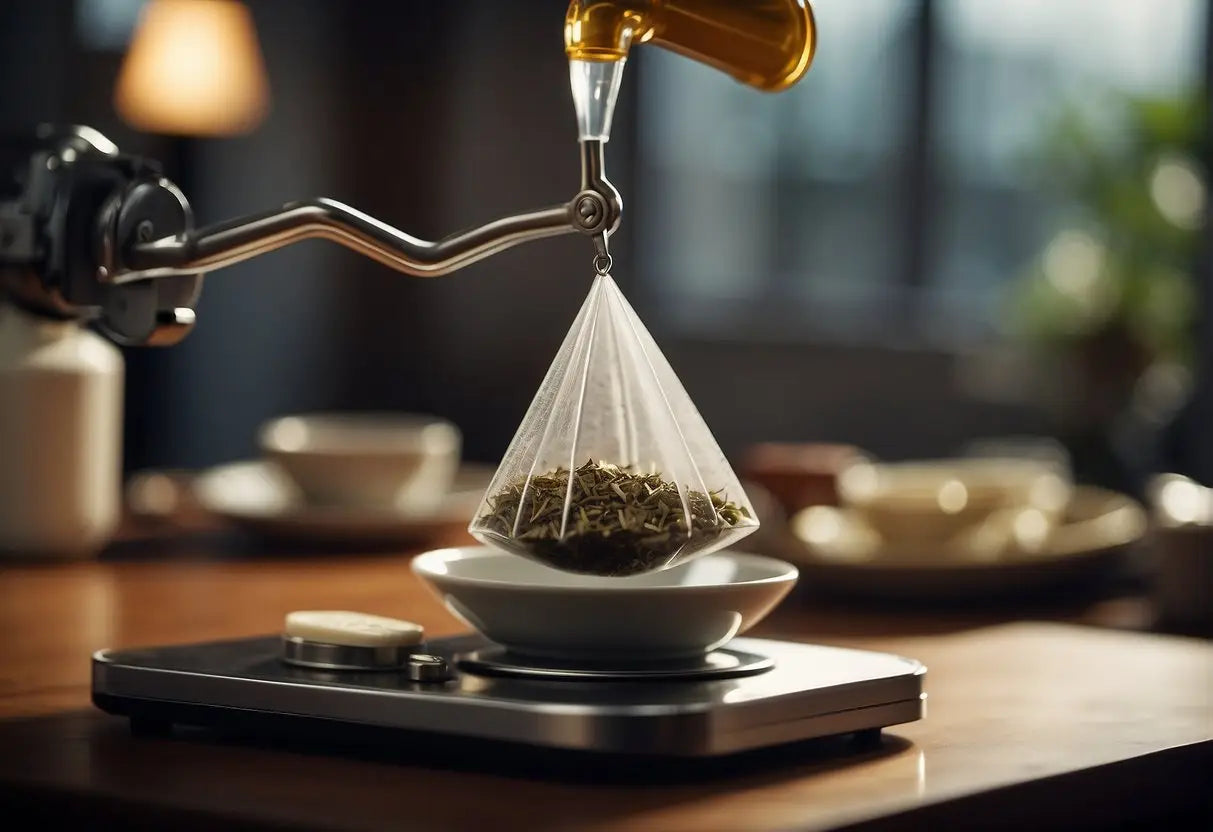
When selecting a tea bag, certain quality indicators can provide insight into the flavor and experience you can expect. These include the grade of tea and the cut and shape of the leaves.
Tea Grade
The grade of tea within a tea bag is determined by its leaf size and the presence of tips. High-quality bags often contain whole leaves or larger leaf pieces. Grades such as "Orange Pekoe" indicate a larger leaf size and are associated with higher quality. Conversely, grades labeled "Fannings" or "Dust" often denote smaller particles used in lower-grade tea bags.
Leaf Cut and Shape
The cut and shape of the leaves in a tea bag affect both the brewing time and flavor release. Whole leaves (Orthodox) take longer to brew but generally offer more depth of flavor and can be steeped multiple times. Crushed, torn, or curled leaves (CTC - Crush, Tear, Curl) are designed to infuse quickly and provide a strong, robust flavor, commonly found in standard, everyday tea bags.
Frequently Asked Questions
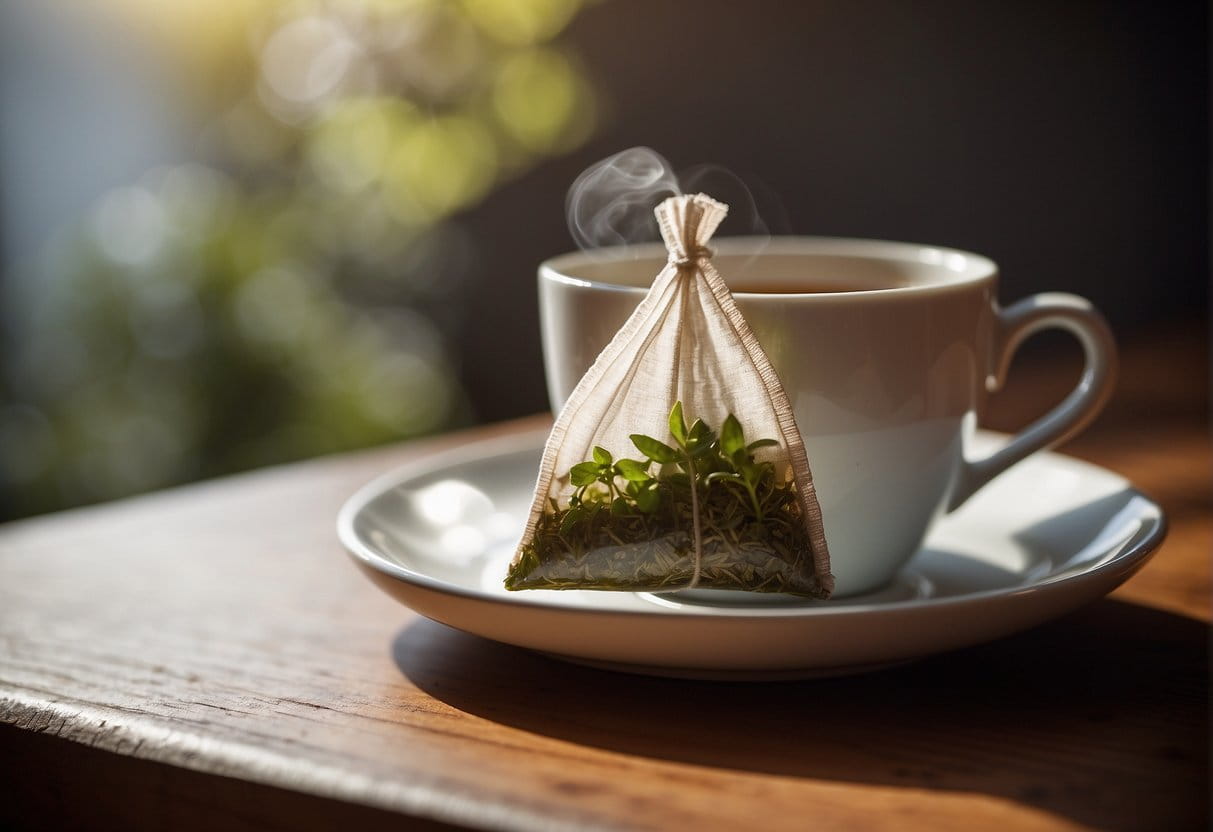
When it comes to brewing the perfect cup of tea, understanding the contents of your tea bag is essential. Below are answers to some common questions regarding the amount of tea typically found in a tea bag.
What is the average weight of tea in a single tea bag?
A single tea bag usually contains between 1.5 to 3 grams of tea, with 2 grams being the most common weight.
How many teaspoons does a typical tea bag contain?
The average tea bag has about one to one and a half teaspoons of tea leaves.
Is the amount of tea in a tea bag sufficient for one cup or more?
A standard tea bag has the right amount of tea leaves for one 8-ounce cup. If you prefer a milder tea, you can use one bag for two cups.
What's the difference in tea quantity between standard and family size tea bags?
Family size tea bags are larger, containing enough tea for a pot, typically around 7 grams, which is roughly three to four times the amount in a standard tea bag.
How do the contents of a Twinings tea bag compare to those of a Lipton tea bag?
Both Twinings and Lipton standard tea bags tend to contain roughly the same amount of tea, which is about 1.5 to 2.5 grams per bag, though the exact weight can vary slightly by product.
Can you convert the amount of tea in a tea bag to tablespoons or ounces?
Yes, the tea in a standard bag is about one to one and a half teaspoons, which equals approximately 1/3 to 1/2 tablespoon, or roughly 0.05 to 0.08 ounces.
← Older post Newer post →











